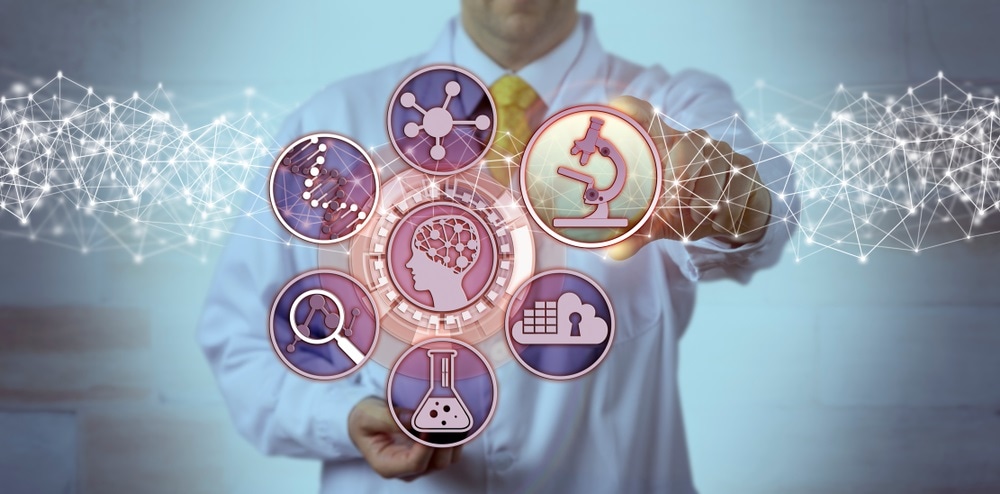An international team of researchers from Monash University Australia alongside those at the Max Planck Institute and Heidelberg University in Germany have established a method of fully autonomous scanning probe microscopy (SPM) that is controlled by artificial intelligence.
 Image Credits: LeoWolfert / Shutterstock.com
Image Credits: LeoWolfert / Shutterstock.com
In a paper published in the journal Communications Physics, the Australian/German team describes how they applied artificial intelligence and deep learning to automate the method, an advancement that will likely be crucial to the future success of the new field of DeepSPM.
The development of DeepSPM
SPM is a family of techniques that investigate physicochemical interactions between a tip and the surface of a material to generate images of the surface topography. The establishment of these methods is a development of the Nobel-prize winning work of Binnig et al. who conducted groundbreaking work back in 1982 when they demonstrated the possibility of analyzing solid surface properties at the scale of the atom using a scanning tunneling microscope (STM). In the years following, research in this area boomed, and as a result, the SPM technique was created to sense the local properties of surfaces.
Now, a team of scientists from the School of Physics and Astronomy at Monash University, Australia, in collaboration with those at the Max Planck Institute of Molecular Cell Biology and Genetics, Dresden, and the Max Delbrück Center for Molecular Medicine, Berlin, and Heidelberg University, has developed the SPM technique further, controlling it by artificial intelligence and machine learning so that it may be automated.
The collaborative work, which has resulted in the establishment of a fully-autonomous SPM operation, will prove useful in eliminating the need for labs to allocate time and resources to supervising SPM processes, allowing their work to be more time-efficient and cost-effective, and also allowing skilled human workers to be redeployed in value-created areas of the business.
The team has named the new system DeepSPM and it is believed that the innovation will join together the fields of nanoscience, automation, and artificial intelligence. It also will be instrumental in establishing the use of machine learning in scientific research, helping to develop its use so that it can reach its full potential.
Achieving full automation
The process of optimizing SPM data acquisition can be slow and monotonous. Currently, a human worker is responsible for this task, and the process is rarely reported on.
The new AI system that has been established by the Australian/German team allows this task to occur automatically, relieving the human worker of the tedious job. The team demonstrated that the automated system can run for time periods of days without the need for any human intervention.
Automated SPM will help bring processes like high-throughput data acquisition and atomically-precise nanofabrication closer to full automation.
In addition, the new deep learning approach developed here could be applied to other SPM techniques, and with the entire framework available publicly, the nanoscience research community has been gifted a valuable tool to facilitate future groundbreaking innovations.
The component of a self-learning agent is vital to the success of DeepSPM. The team created a self-learning agent that learns from experience to adapt to the constantly changing environment to maintain a stable system.
The team describes how algorithmic search of the best locations to sample is the first stage of the AI-driven process, and once a region is selected, autonomous data acquisition proceeds.
Next, a convolutional neural network is used to assess the data’s quality. Following this, the condition of the probe can be improved on using a deep reinforcement learning agent is the data collected is deemed substandard.
The approach will likely see adoption in numerous areas of experimental science.
Journal reference:
Krull, A. et al. (2020) Artificial-intelligence-driven scanning probe microscopy. Communications Physics. DOI: https://doi.org/10.1038/s42005-020-0317-3